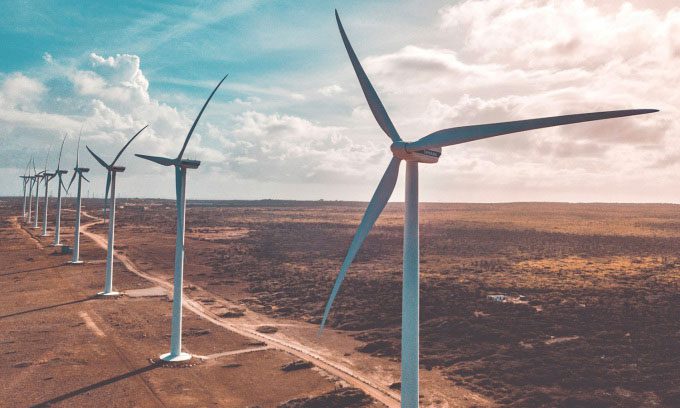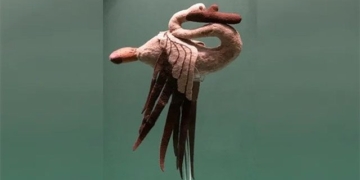Wind turbines generate electricity using permanent magnets, which are extremely strong magnets but contain rare earth elements that are difficult to mine and recycle.
From an environmental perspective, wind turbines are a great deal, IFL Science reported on March 3. They have a “payback period” – the time needed for the turbine to produce enough clean energy to offset the pollution generated during manufacturing – of less than a year. They produce almost no pollution during operation and are very efficient, with a single turbine capable of providing electricity to about 940 average homes in the U.S. each month.

Many wind turbines equipped with permanent magnets, which use rare earth elements. (Photo: Rabih Shasha).
However, wind turbines are very difficult to recycle, including the rare earth components inside. “Currently, to our knowledge, almost no rare earth elements from wind turbines are being recycled,” said Tyler Christoffel, technology director at the U.S. Department of Energy’s Wind Technology Office.
This statistic is not surprising. Worldwide, experts estimate that less than 1% of rare earth elements – including substances like cerium, lanthanum, and neodymium – are recycled. Rare earth elements, true to their name, are very difficult to find in useful quantities.
Typically, metals concentrate in the Earth’s crust due to various geological processes, such as lava flows, hydrothermal activity, and mountain formation. However, the unusual chemical properties of rare earth elements often prevent them from concentrating together under these special conditions. Traces of rare earth elements are scattered throughout the planet, making their extraction inefficient.
Sometimes, acid-rich underground environments can slightly increase the concentration of rare earth elements in certain locations. However, finding these sites is just the first challenge. The subsequent extraction process is also complicated due to the extreme difficulty of isolating pure elements. Currently, China accounts for about 70% of the world’s rare earth production.
Rare earth elements are becoming increasingly important. They play a crucial role in many fields, from industrial applications to personal devices like laptops and smartphones. Of course, they are also integral to wind turbines.
“When spinning, the blades of the wind turbine generate kinetic energy. The permanent magnet generator converts this kinetic energy into electrical energy through the interaction between two opposing permanent magnets,” wrote Kristin Vekasi, an assistant professor at the University of Maine, in a 2022 study.
“Other magnets can also perform this task, but permanent magnets have many advantages, such as higher efficiency, smaller size, fewer moving parts that can break down, and they do not require external charging. The wind does all the work,” she explained.
Rare earth elements are present in these magnets, often as neodymium or samarium. These are currently the strongest magnets available, but they are not indestructible. They can lose magnetism due to overheating, corrosion, accidental impacts, or magnetic field issues. As a result, the process of refurbishing wind turbines – replacing old parts, upgrading components like generators, and swapping out rare earth magnets – is almost continuous.
To address this issue, the U.S. Department of Energy launched a competition last year to find effective recycling solutions for turbine components. Last month, 20 winning teams from the first phase of the competition were announced, with 4 teams focusing on recycling magnets.
As the U.S. invests more in wind energy and rare earth-based technologies continue to develop, recycling rare earth elements will become a much more pressing issue, according to Christoffel. “This award encourages the development of recycling technologies that may provide ways to use magnets with fewer resource expenditures and lower emissions,” he said.


















































